2024 Ford Mustang: What We Know So Far
While the exterior isn't radically different, the Blue Oval's seventh-gen pony car makes big strides inside the cabin.
Capital One
Article QuickTakes:
There's a new Mustang in town, that town being Detroit. It's the 2022 North American International Auto Show this week, and Ford arranged for more than 1,000 Mustangs to roll into the Motor City to help usher in the seventh generation of its pony car. The so-called Stampede culminated in the model’s unveiling, which took place at Hart Plaza along the riverfront. At the event, Ford had all six prior generations of the Mustang on display to show the heritage of what has been, for the past seven years, the best-selling sports coupe in the world. Here’s what it had to say about the new model.
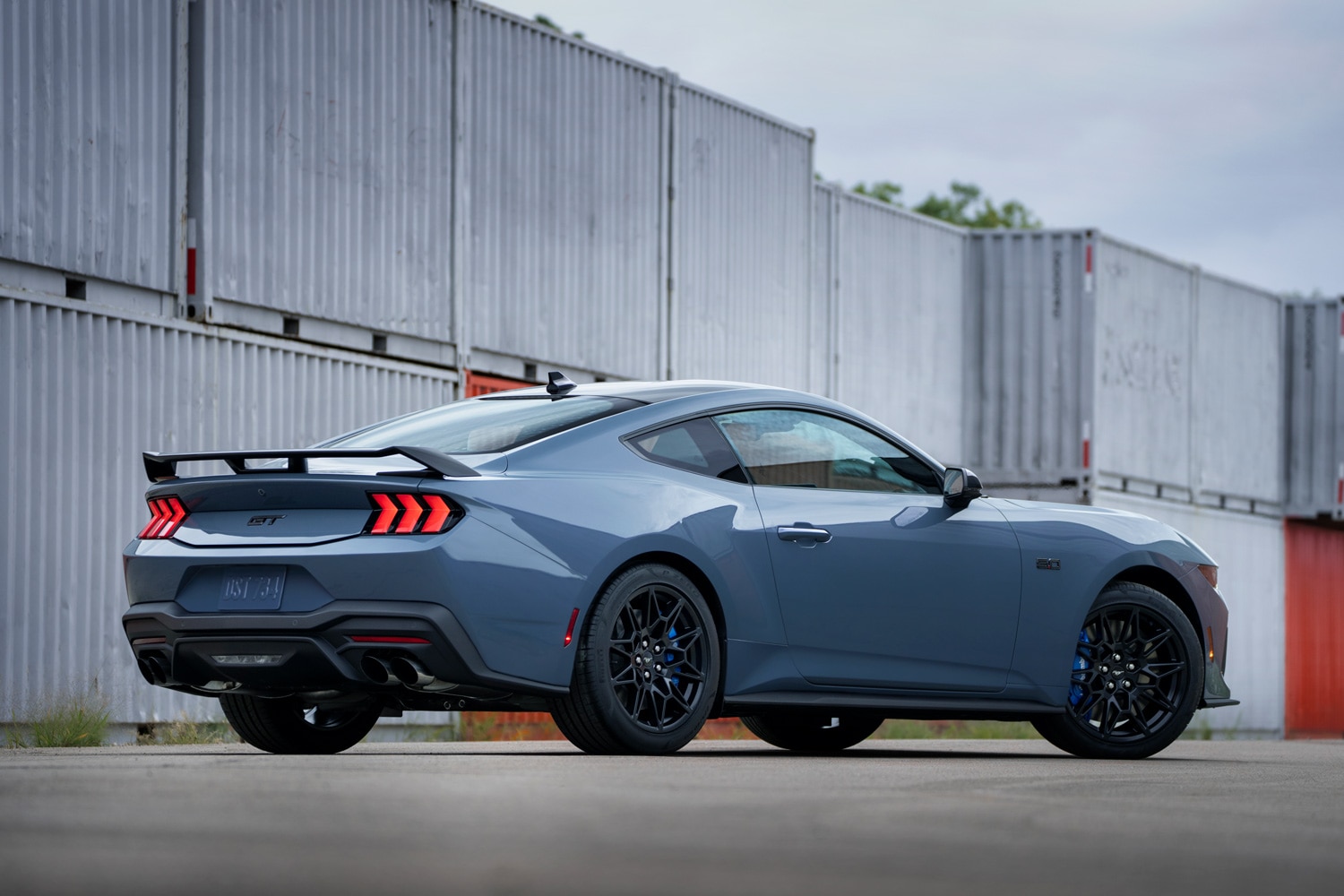 Ford
Ford
Performance
First let's talk engines: The 2024 model will launch with two mills on the menu. The entry powertrain is a revised version of the EcoBoost 2.3L four-cylinder that was surprisingly great in the sixth-gen Mustang. The upgrade pick—gracing GT models—is a new iteration of Ford’s Coyote 5.0L V8. Buyers still have a choice between a six-speed manual and a 10-speed automatic transmission. Surely more options will come down the road as Ford builds out the Mustang portfolio, but the rumored hybrid is not happening.
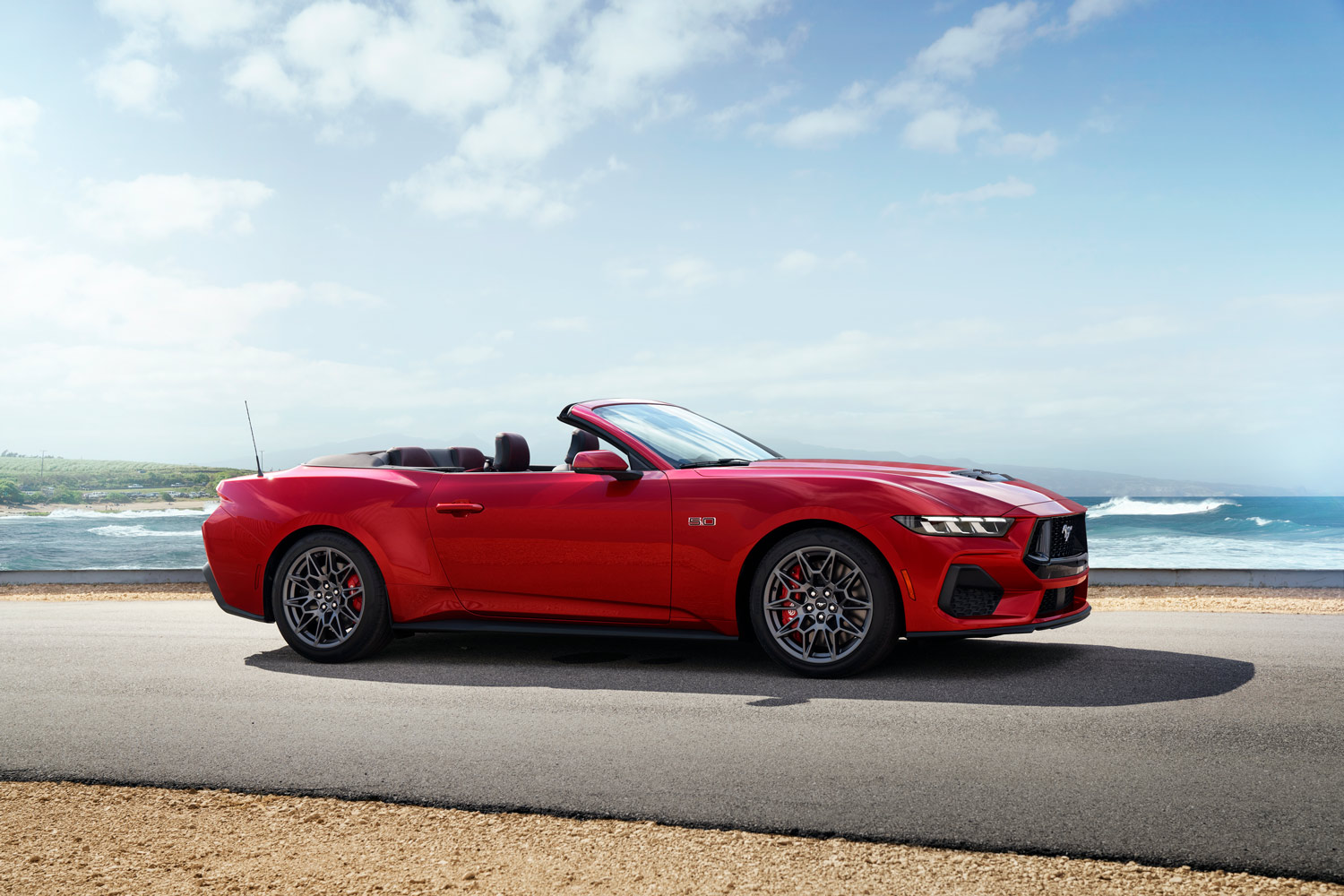 Ford
Ford
Output figures remain under wraps, but we're not expecting much of a change from the current EcoBoost’s 310 horsepower and 350 pound-feet of torque. Updates are a bit more substantial on the 5.0. Dual intakes lead to dual throttle bodies, increasing airflow and intake efficiency over the previous generation’s single unit. Ford revised the camshafts to handle the extra oxygen. Anticipate gains in output compared with the outgoing model's 450 ponies and 410 pound-feet.
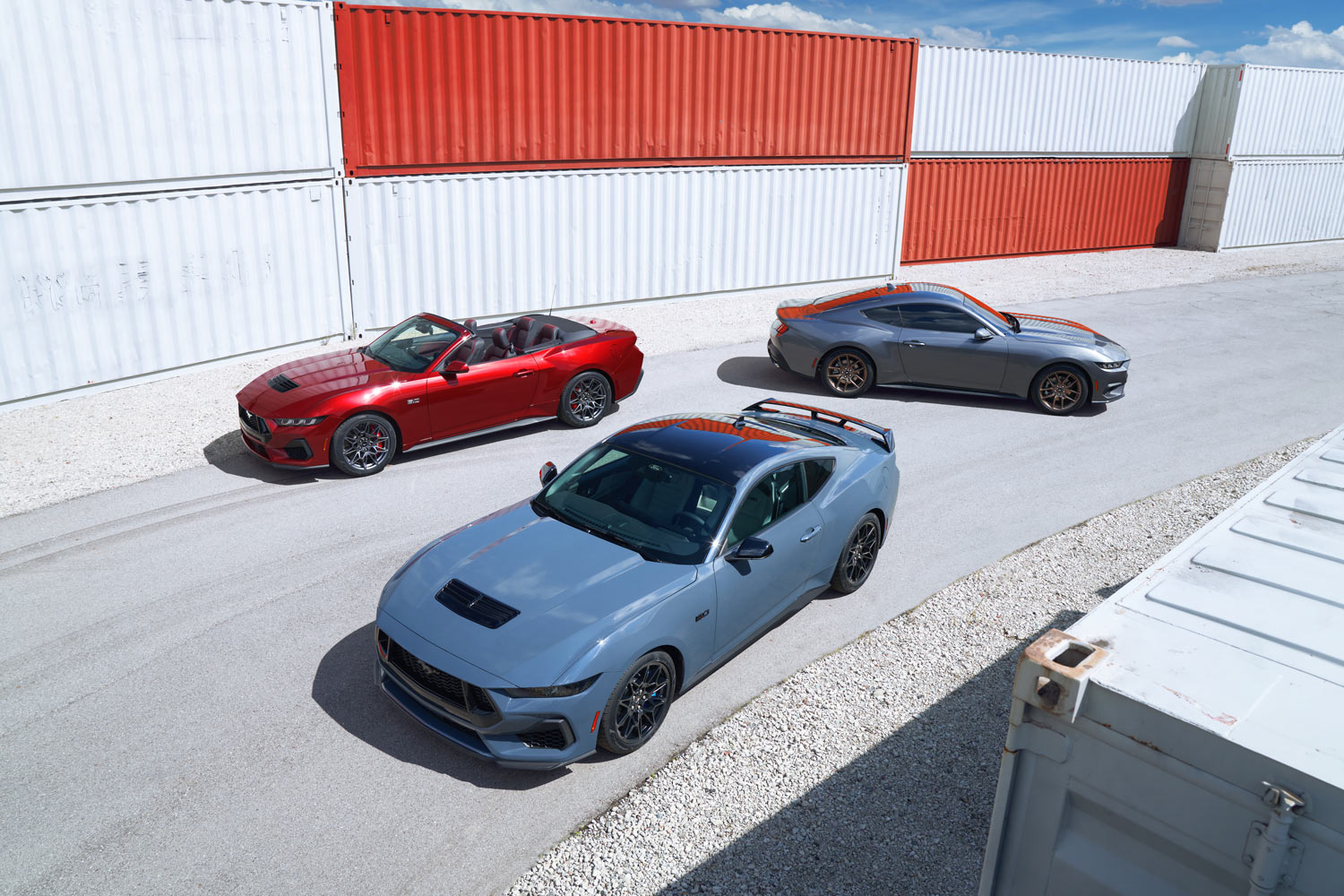 Ford
Ford
Styling
As for styling changes, things are more evolutionary than revolutionary, and the differences between models are subtle. The GT’s fascia gets a grille divider that splits it into three parts—something the EcoBoost Mustang's nose lacks. It also boasts more aggressive-looking corner intakes than its sibling. Along the side, Ford lowered the beltline, which kicks up over some giant rear fender flares. In back, the triple-bar taillights remain, but they bend in the middle to follow the decklid’s deep body crease. As a result, they sort of look like chevrons, pointing toward the Mustang’s flanks in an attempt to make the tail look wider than it is. Even here, though, you'd be forgiven for confusing this new Mustang for the old one.
It’s perhaps worth noting that this is the more extreme of the possible designs for the seventh generation. According to a company representative, when Ford was close to finalizing the look of the thing, designers were split on whether to go with a more conservative design or this edgier styling, which some thought was, well, a little much. Ford brought in a gaggle of millennials to help make the decision. No surprise, they overwhelmingly preferred the latter, and that’s what you see here.
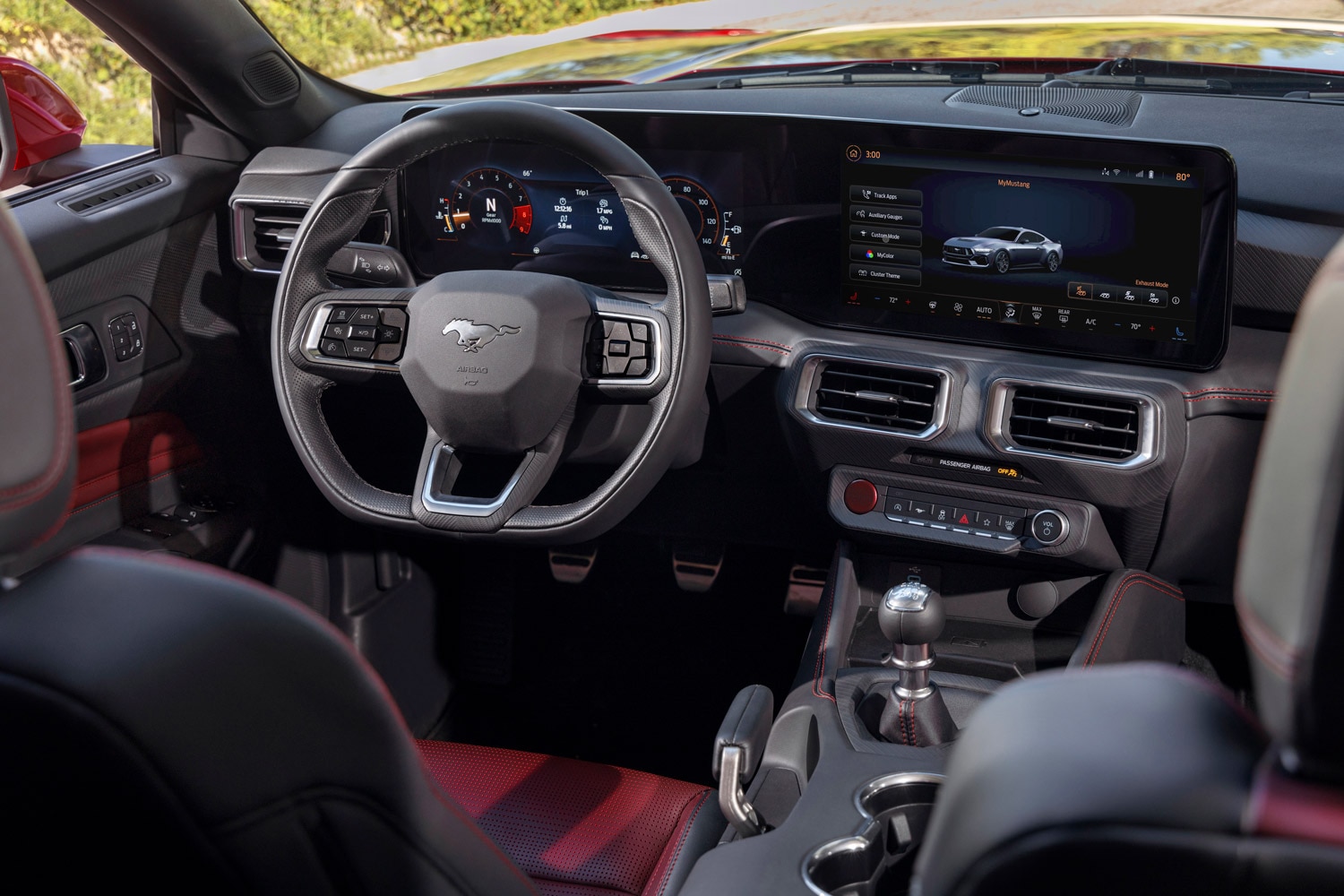 Ford
Ford
Technology
The inside is a massive step forward, offering a big tech upgrade and improved materials with higher-grade stitching and finishes. On Premium and GT models, the infotainment and gauge-cluster screens combine to form a single, unified display that’s tilted slightly toward the driver. There are far fewer buttons in this one too. Ford eliminated the dedicated HVAC controls, for instance, to make room for a smartphone cubby on the center stack with wireless charging. Now drivers will access the climate settings through the infotainment system.
In a not-so-subtle play at wooing the youth market, Ford has turned to Unreal Engine 3D software to make its interfaces look and feel like a video game’s. Owners can select a digital recreation of the Fox-body Mustang’s instruments, for instance, complete with 1980s-spec green lighting at night. And as they swipe through the pages on the infotainment screen, they’ll be treated to flashier graphics than ever before. Customize a drive mode and you’ll see a sweeping, cutaway view of a Mustang, parts dynamically highlighted in neon colors as you adjust things like steering weight or engine responsiveness.
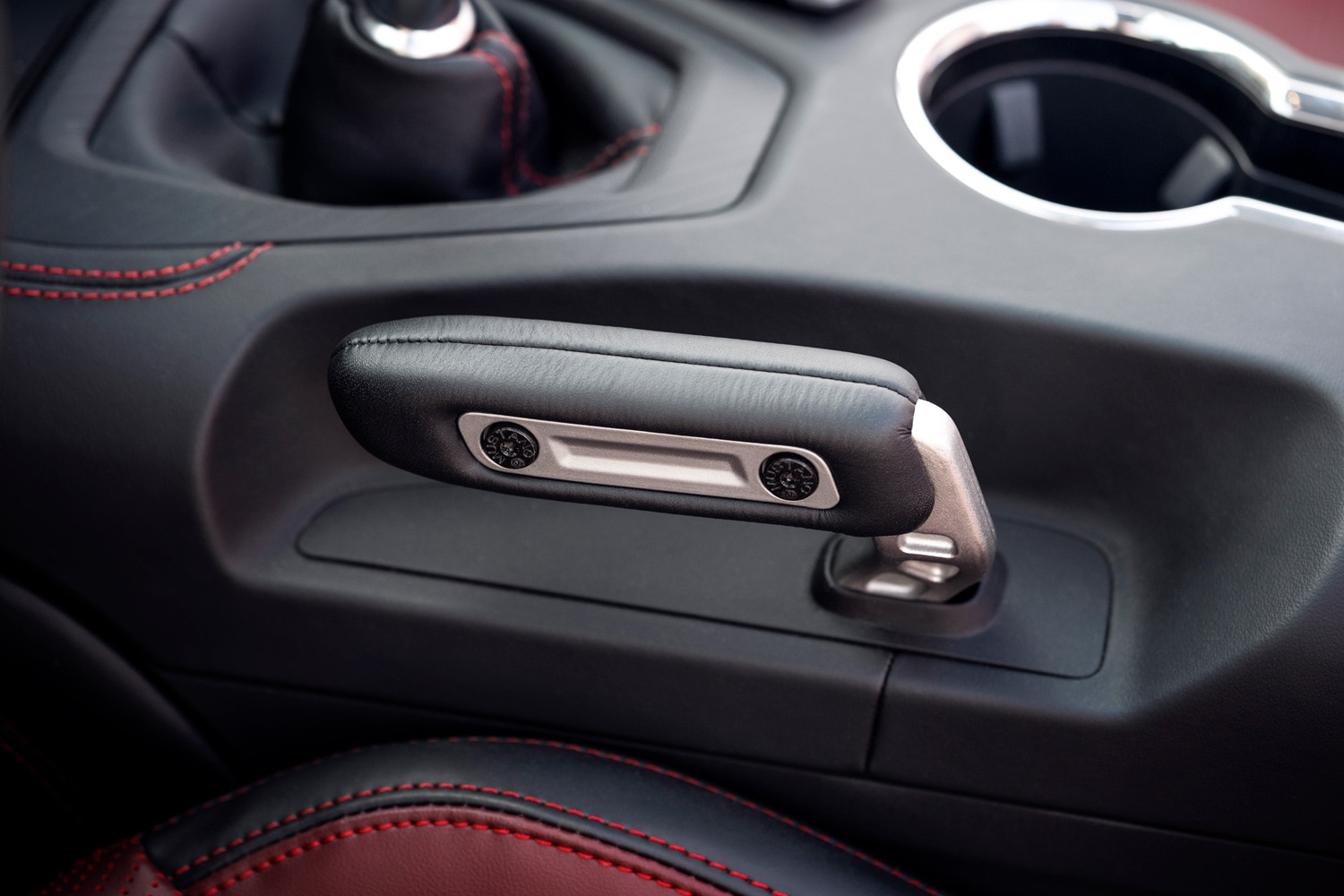 Ford
Ford
But perhaps the biggest interior change—and the most obvious nod to gaming culture—might be the digitally controlled handbrake. It’s basically a big joystick. Put the car in Track mode, and when you yank the handle, the rear wheels lock up. Professional drifter Vaughn Gittin Jr. worked with the development team to make sure it all felt right, advising on everything down to the shape of the handle. At first blush, it seems crazy for Ford to put a digital, drift-enabling handbrake in a production car, but then the previous generation offered line-lock support for easy burnouts; hooliganism is not unprecedented.
The seventh-generation Mustang will hit dealers sometime in the first half of 2023. Only time and internet comments will tell whether Ford has hit its mark.



